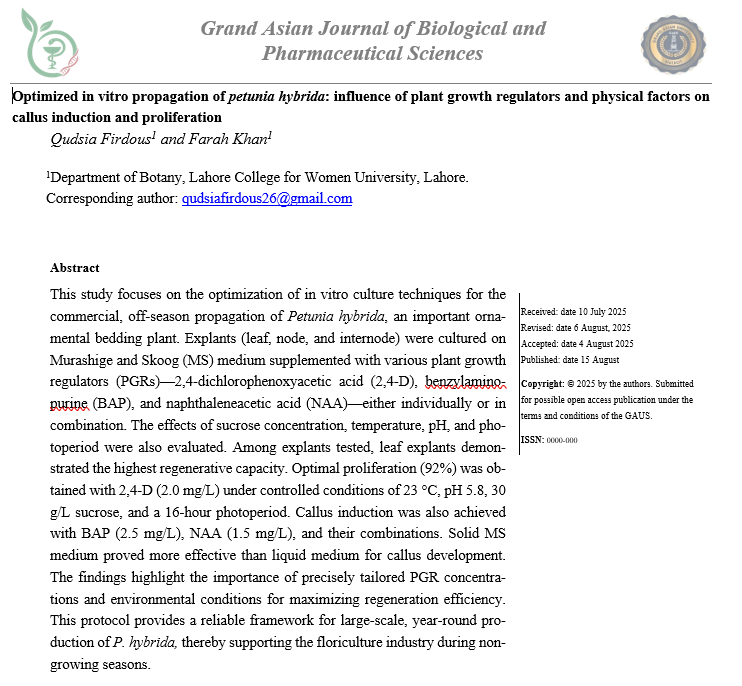Optimized in vitro propagation of petunia hybrida: influence of plant growth regulators and physical factors on callus induction and proliferation
Keywords:
Petunia hybrida, Auxin, Explant, tissue culturing, Callus, MS basal mediumAbstract
This study focuses on the optimization of in vitro culture techniques for the commercial, off-season propagation of Petunia hybrida, an important ornamental bedding plant. Explants (leaf, node, and internode) were cultured on Murashige and Skoog (MS) medium supplemented with various plant growth regulators (PGRs)—2,4-dichlorophenoxyacetic acid (2,4-D), benzylaminopurine (BAP), and naphthaleneacetic acid (NAA)—either individually or in combination. The effects of sucrose concentration, temperature, pH, and photoperiod were also evaluated. Among explants tested, leaf explants demonstrated the highest regenerative capacity. Optimal proliferation (92%) was obtained with 2,4-D (2.0 mg/L) under controlled conditions of 23 °C, pH 5.8, 30 g/L sucrose, and a 16-hour photoperiod. Callus induction was also achieved with BAP (2.5 mg/L), NAA (1.5 mg/L), and their combinations. Solid MS medium proved more effective than liquid medium for callus development. The findings highlight the importance of precisely tailored PGR concentrations and environmental conditions for maximizing regeneration efficiency. This protocol provides a reliable framework for large-scale, year-round production of P. hybrida, thereby supporting the floriculture industry during non-growing seasons.





